There might not be a lot of design changes done on the Galaxy S9+ but the improvements under the hood are more than enough to consider this as timely update to its predecessor.

If you have not read our Galaxy S9 review, you can check it out here. A sizable chunk of what we discussed here were also mentioned there.
You can also watch our video hands-on of the Galaxy S9 and S9 Plus below:
Table of Contents
Design and Construction
The Galaxy S9+ follows the same design DNA as the Galaxy S8+. From the exterior, there is not a lot of noticeable changes from the Galaxy S8+ to the Galaxy S9+. The dimensions have slightly changed but not that obvious unless you put them side by side.

The device is slightly shorter than the S8+ due to the narrower top and bottom bezels. The placement of the physical buttons is the same but not exactly identical.
The power button is on the right, volume controls on the left along with the dedicated Bixby button. SIM card slot up top along with the noise-canceling mic while the Type-C charging port is at the bottom, flanked by the 3.5mm audio port, primary mic and the speaker grille.

There are no physical buttons at the front while the sensors, speakerphone and front-facing camera are all squeezed at the top bezel. At the back is the dual camera system with a dual-tone, dual LED flash right beside it.
The only significant physical modification Samsung has made is the extra rear camera and the placement of the fingerprint scanner below the rear camera instead of beside it. That simple change in placement certainly made a lot of sense as it made it easier to reach with the finger when unlocking the phone.

The device also has IP68 dust and water resistance of up to 1.5 meters for 30 minutes. The S9+ is a bit thicker though at 8.5mm compared to the 8.1mm of the S8+.
Display and Multimedia
The Galaxy S9+ retains the same 6.2-inch display from the S8+ with an almost similar screen-to-body ratio of 84.2% (vs. 84% on the S8+).

Samsung employs the same Super AMOLED display so expect the same vibrant and rich colors, crisp details and high contrast. Outdoor visibility is pretty good too. It’s got the same HDR 10 compliance for better viewing with HDR-enabled services like Netflix or Amazon Prime Video.

The Galaxy S9+ features a high screen resolution of 2,960 x 1,440 pixels (WQHD+) giving it a pixel density of 529ppi. The resolution can be natively adjusted though, with options for Full HD+ (2,220 x 1080 pixels) and HD+ (1,480 x 720 pixels), depending on user preference. Lowering the resolution consumes less power and, thus, prolongs battery life.

Protecting the display is Gorilla Glass 5 with the back panel also using the same for better resistance against scratches and accidental drops. Same as before, the glass curves toward the edges to give it that seamless look.

The Galaxy S9+ now features stereo speakers — the first one is placed at the bottom where it is usually found and the second one come from the top corner on the speakerphone. This gives the phone a much better sound coverage when listening to music or watching a movie. The volume is also much louder but does not distort even at the highest level. The box also comes with AKG earphones that sounds good and comfortable to wear.
Camera
Samsung uses Sony image sensors for its cameras. The rear shooter is a combo of dual-cameras with the secondary lens having a wide-angle field of view. This 2nd camera is what separates the Galaxy S9+ from the Galaxy S9.
We’re glad that the secondary rear camera is now independent of the primary camera and features a wide-angle field of view, similar to what LG has been doing with their G and V series smartphones. The setup is much more practical and useful especially for those who prefer shooting scenic or landscape shots.

The primary 12-megapixel sensor has a variable aperture that goes wide open at f/1.5 but can be adjusted to f/2.4. At f/1.5, the camera can see better at low-light, even better than the naked eye.
It also allows it to shoot objects with a creamy bokeh in the background. At f/2.4, it allows just enough light not to overexpose especially in very bright situations like during high noon. We originally thought that you can toggle the aperture between f/1.5 to f/2.4 but, as it turns out, there’s just these two as the only options.
The difference between the telephoto camera and the wide angle camera are shown in these examples below:


The camera adjusts the aperture in Auto mode but you can also set the aperture manually in Pro Mode. With the built-in optical image stabilization, the camera can shoot better with fewer shakes or blurry images. The wide aperture allows it to shoot at higher shutter speeds, making shots more accurate.

Camera interface in Pro mode.
The difference between the f/1.5 and f/2,4 aperture on the main camera is shown below in this low-light shot:

On top of the usual 4K video recording, the Galaxy S9+ can now shoot slow-mo of up to 960 frames per second. The resolution is decent at 720p and the capture time is about 0.2 seconds.
On playback, that should translate to about 6.4 seconds of slow-mo footage at 30fps.

The front-facing camera has an 8-megapixel sensor with a f/1.7 aperture with 1080p video recording (this is practically the same as the one in the S8+).
Selfies are great with enough blur or bokeh to separate the subject from the background. Facial details and skin tones are accurately captured.

The front camera also has an entertaining feature called AR avatar (Emojis) which analyzes the users face then creates a virtual avatar similar to what we’ve seen with the iPhone X’s Animoji feature.
OS, UI and Apps
The Galaxy S9+ runs on Android 8.0 Oreo right out of the box and this is heavily customized by Samsung Experience 9.0 UI. The interface is simple and clean, relies a lot on swipes to navigate. If you don’t like the default theme, there a lot of alternative ones available in the Theme Store for free.

Signature UI features such as App Edge, People Edge, and Clipboard Edge are all present on the Galaxy S9+. These can be really great features once you get used to using them.

Bixby smart assistant is still here along with its dedicated Boxby button and Bixby Vision 2.0 features. It comes in 3 parts — Bixby Home (a collection of information curated to the users’ needs and lifestyle in a dedicated home screen), Bixby Voice (for a personalized voice command), and Bixby Vision (for object recognition and augmented reality).

For security, there are three (3) options for biometric identification — the fingerprint scanner at the back which you can set for up to 4 unique fingerprints, the Iris scanner, and the facial recognition.
Performance and Benchmarks
The Galaxy S9+ is powered by a new Exynos 9810 chipset which is fabricated using the 10nm process. The device is blazing fast, performs in tip-top shape and smoothly handles everything we threw at it. This is paired with either 4GB or 64GB of RAM and 64GB, 128GB or 256GB of UFS 2.1 internal storage.
The upgrade to the new 10nm chipset is expected. The Exynos 9810 Octa was already announced last January so we have a good amount of knowledge about it. The high-powered Custom CPU clocks in at 2.7GHz per core while the power-efficient processor is composed of a quad-core ARM Cortex A55 running at 1.8GHz.

Running the GPU department is a Mali G72-MP18 graphics. This is similar to the one running on the Huawei Mate 10 but with more cores. The Galaxy S9+ scored an impressive 240,270 in Antutu Benchmark. This puts the Exynos 8910 on top of the charts, beating even the iPhone X.
The Exynos 9810 on the S9+ is a huge improvement over the Exynos 8895 on the S8+. The single core speed now goes up to 2.7GHz from 2.3GHz. Also, the Mali G72-MP18 GPU is way better than the Mali-G71 MP20, as reflected in the benchmark scores.
Note: In other regions, Samsung uses Qualcomm’s Snapdragon 845 as the primary chip.
Connectivity, Call Quality and Battery Life
In terms of connectivity, the same set of options are available — fast WiFi, Bluetooth 5.0, NFC, GPS and 4G LTE connectivity.

There is dual-SIM support (indicated by a Duos label at the back) but it’s hybrid so the second nano-SIM tray is swappable with a microSD card of up to 400GB. Both SIM trays support 4G LTE connection. The LTE modem is now Cat. 18 with support for up to 6 carrier aggregation and a combined speed of 1.2Gbps.

The Samsung Galaxy S9+ is packed with a 3,500mAh internal battery, same as the one found in the S8+ so we’re not really expecting much difference in terms of battery performance.
Using our standard PC Mark Battery Test (Work 1.0), the Galaxy S9+ clocked in at 10 hours and 21 minutes at 50% brightness, zero volume and in airplane mode (8:27 in Work 2.0). That’s almost the same results we got from the Galaxy S8+ last year at 10:23.
In our video loop test, the Galaxy S9+ lasted about 16 hours while playing a 1080p movie at 50% brightness, zero volume and in airplane mode. This is shorter than the 18 hours we got on the Galaxy S8+.
As expected, the device supports fast wired charging via USB Type-C as well as fast wireless charging. Charging time is about 70 to 80 minutes from zero to fully charged. The included wall charger support up to 2A at 5V.
Conclusion
While the Galaxy S9+ may not look that much different than the Galaxy S8+, much of the improvements were made under the hood. Don’t fix something that ain’t broken, right? It’s got a slightly more compact in an almost identical design, a more practical placement of the fingerprint scanner and an inclusion of stereo speakers are all nice.

There’s 30% improved performance, higher memory and storage options, a dual-camera setup at the back, better speaker system and a more polished operating system all make the S9+ a pretty solid flagship phone.
If there’s one thing that really surprised us this time around, that would be the retail price. At Php52,990, it’s more expensive than the Galaxy Note 8 (one would wonder how much the Galaxy Note 9 cost once it’s announced). Samsung is really testing its brand value and, based on their sales performance with the Galaxy Note 8, we think they will still do just as well with the Galaxy S9 and S9+.
Nationwide release in the Philippines is slated on the 16th of March, 2018.
Samsung Galaxy S9+ specs:
6.2-inch WQHD+ (2960 x 1440) 18.5:9 Super AMOLED display, 531ppi 83.2% Screen to body ratio Gorilla Glass 5 (front and back)
Samsung Exynos 9810 octa-core 4 x 2.9GHz Custom CPU + 4 x 1.9GHz ARM Cortex A55
Mali G72-MP18 GPU
6GB LPDDR4 RAM
64GB, 128GB, 256GB UFS 2.1 internal storage
12MP f/1.5-f/2.4 dual pixel, OIS, 2x optical zoom, telephoto 12MP f/2.4 dual pixel, OIS, wide-angle Dual-tone, dual-LED flash 2160p@30fps video recording, Slow-mo 960fps @ 720p (0.2 secs)
8MP f/1.7 front-facing camera
Dual hybrid nano-SIM card and microSD card
4G LTE Cat. 18 6CA 1.2Gbps
WiFi 802.11ac
Bluetooth 5.0, A2DP, LE, aptX
NFC
Iris scanner
Fingerprint scanner
Bixby Vision 2.0
GPS with aGPS, GLONASS, BeiDou
IP68 dust and water-resistance
Dual AKG speakers, Dolby ATMOS
Android 8.0 with Samsung Experience 9
3,500 Li-Po battery USB Type-C Fast Charge, Wireless Charging
158.1 x 73.8 x 8.5mm
189 grams
Midnight Black, Lilac Purple, Coral Blue
| Device Model | Storage | RAM | Color | Retail Price |
|---|---|---|---|---|
| Galaxy S9 | 64GB | 4GB | Midnight Black, Lilac Purple | Php45,990 |
| Galaxy S9+ | 64GB | 6GB | Midnight Black, Lilac Purple | Php52,990 |
| Galaxy S9+ | 128GB | 6GB | Midnight Black, Lilac Purple, Coral Blue | Php55,990 |
| Galaxy S9+ | 256GB | 6GB | Midnight Black, Coral Blue | Php60,990 |
What we liked about it:
- Impressive performance
- Very nice display
- Great dual camera setup
- Loud, stereo speakers
- Fast wireless charging
- Water resistance
What we did not like:
- Super expensive
Shorter battery life






















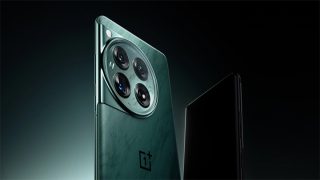
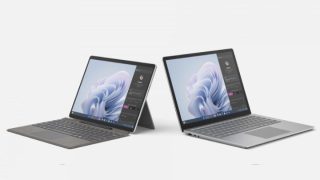
















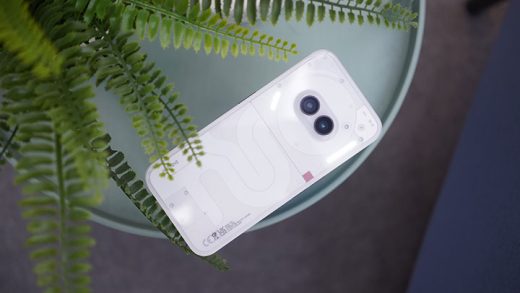
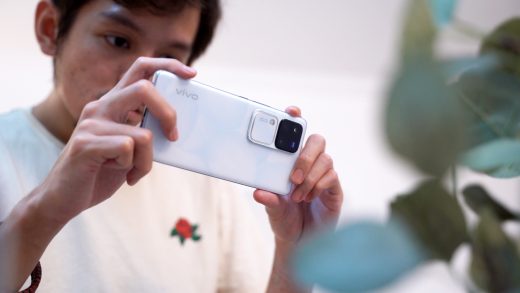
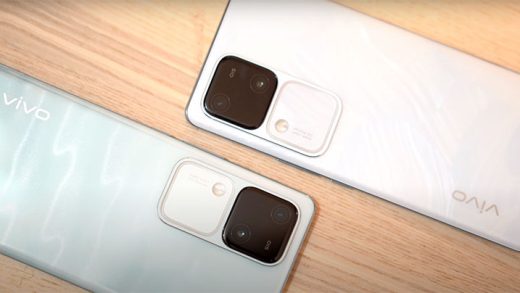





This is giveaway
Here in KSA, the 256GB S9+ only costs roughly 49K pesos with 2 years warranty and 5% VAT included. Tax in the PH clearly makes a difference in pricing
I just want to know how much is the Samsung S9?